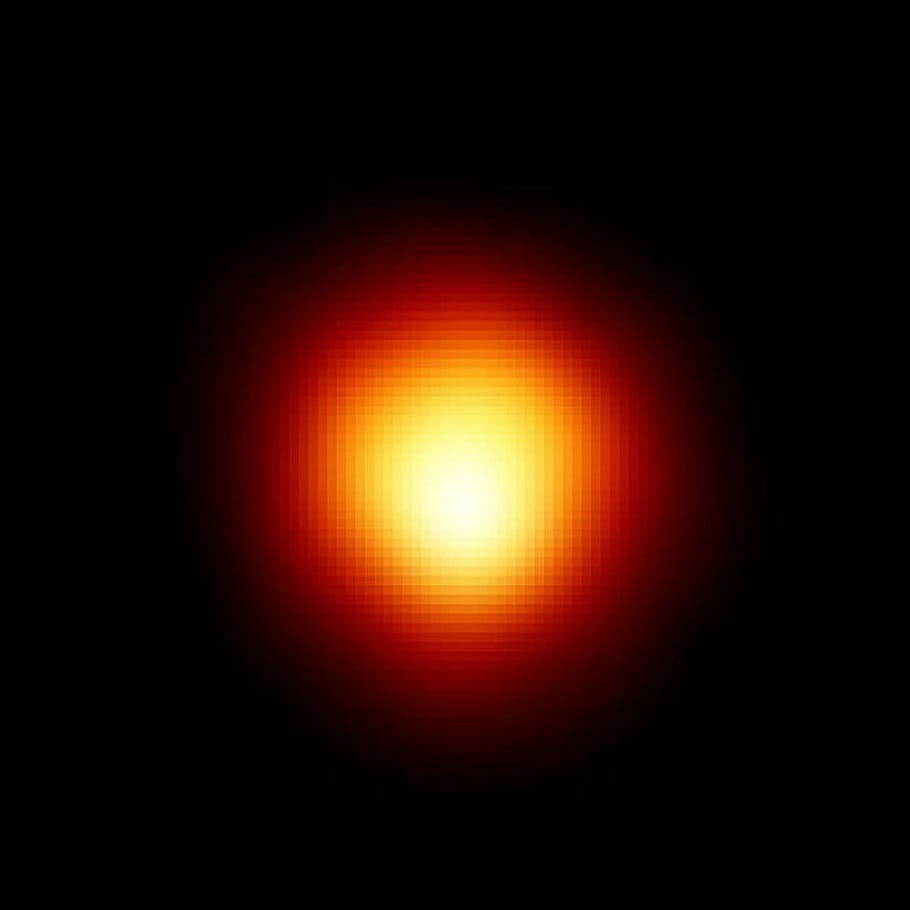Betelgeuse, the red supergiant star that can be seen in the constellation Orion, has for a very long time piqued the interest of astronomers and stargazers alike, as well as sparked their imaginations. Because of its spectacular look and unusual behavior, talks and speculations regarding the possible effects it could have on Earth have been started. In recent years, there has been a resurgence in interest in the subject of whether or not the red supergiant Betelgeuse poses a threat to planet Earth.
Examining the attributes of Betelgeuse is the first step toward gaining an understanding of the context of this discussion. Betelgeuse is one of the largest stars that is known to exist in the cosmos, and it is located roughly 640 light-years away from our planet. It is believed that its diameter is almost 1,000 times that of our Sun, which establishes it as a true cosmic giant. Due to the huge size of Betelgeuse and the advanced stage it has reached in its evolution as a star, scientists have predicted that it will eventually explode as a supernova.
A supernova is caused when a big star, such as Betelgeuse, runs out of its nuclear fuel and then collapses under the weight of its own gravity, resulting in the release of enormous amounts of energy. Because of this disastrous occurrence, a large amount of energy is released, which causes the star to explode and unleash powerful radiation over the electromagnetic spectrum. The explosion has the potential to temporarily outshine an entire galaxy and can cause a considerable amount of star material to be released into space.
It is reasonable to be concerned about the potential impact a Betelgeuse supernova could have on Earth given its magnitude and the stage it has reached in its evolutionary process. It is essential, however, to take into account the enormous distances that separate our planet and the star in question, in addition to the features of supernovae.
The fact that Earth is located 640 light-years away from Betelgeuse indicates, first and foremost, that any influence from a Betelgeuse supernova would be significantly diminished by the time it reaches Earth. Over such a long and enormous voyage across space, the intense radiation and shockwave that were released by the explosion would spread and become less powerful. In point of fact, scientists believe that the impacts on our planet would be minimal, and more along the lines of a spectacular light show in the night sky rather than posing any kind of immediate threat.
In addition, research has indicated that for the supernova explosion itself to represent a more serious threat to Earth, it would have to take place within a rather narrow range of precise angles in relation to the planet. It is imperative that the alignment be such that the Earth is placed directly in the path of the supernova’s tremendously intense particle jets in order for this to be possible. This event, which is known as a gamma-ray burst, does not take place very frequently and is not likely to take place with Betelgeuse.
In addition, despite the fact that supernovae unleash a vast quantity of energy, the influence of these events decreases with increasing distance. Even if a supernova were to happen closer to Earth, perhaps within a few dozen light-years, the effects would probably be restricted to transient disruptions in the Earth’s atmosphere and ozone layer at most. This is because supernovae are extremely rare. Because of these disruptions, there may be an increase in the amount of UV light that reaches the surface, which may have an impact on various forms of life as well as the environment. On the other hand, the consequences over the long run would be quite minor and regionalized.
It is important to note that scientists keep a constant eye on Betelgeuse in case there are any warning indicators of impending supernova activity. Over the course of the previous few years, the star has demonstrated variations in its level of brilliance, which has given rise to rumors of an imminent explosion. However, it is more likely that these changes are the result of typical star activities, such as the ejection of material into space, rather than an immediate precursor to an event involving a supernova.
In conclusion, although the astronomical phenomenon known as Betelgeuse is awe-inspiring, there is no reason to be concerned about the potential threat that it poses to Earth. The huge distances involved, the limited impacts of supernovae at such distances, and the low possibility of a gamma-ray burst alignment are all factors that lead to the conclusion that Betelgeuse does not present an urgent threat. Instead, we can view Betelgeuse as the breathtaking astronomical wonder that it is, and we can carry on with our quest to investigate and gain knowledge from the fascinating cosmos that surrounds us.
![]()
